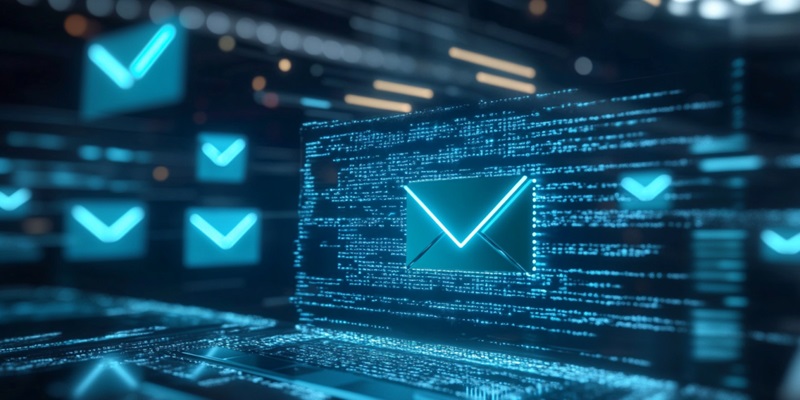Envisioning the future of email marketing automation, especially by 2025, calls for an understanding of the technological advancements poised to revolutionize this field. One of the most significant shifts in email marketing will be driven by artificial intelligence (AI), enabling businesses to deliver highly personalized content based on real-time customer behavior. This transformation is not just about sending emails but ensuring the messages resonate profoundly with the recipient, boosting engagement and conversion rates. AI will analyze customer actions, preferences, and previous interactions to recommend products or services tailored to each individual. Moreover, AI-powered tools will refine subject lines, perform advanced metric analysis, and create hyper-personalized audience segments, making email campaigns more effective and efficient.
The Role of AI in Personalization
By 2025, the influence of artificial intelligence on email marketing automation is expected to be profound, especially in terms of personalization. AI will enable marketers to craft messages specifically catered to individuals, harnessing real-time data analytics to gauge customer behavior accurately. This goes beyond basic demographics and touches on nuanced preferences, recent searches, and purchase history. The potential for AI to recommend products or services specifically suited to a user’s interests will not only enhance relevance but also increase the likelihood of conversion.
Additionally, AI will streamline the creation of subject lines and content that capture attention. By analyzing large sets of data, AI tools can identify patterns that are most likely to engage recipients, allowing marketers to craft compelling messages effortlessly. AI’s efficiency will extend to the analysis of campaign metrics, providing insights that human marketers may miss. This deeper analytics will result in more informed decisions, enabling subtle adjustments that can significantly enhance campaign performance.
Integration of Omnichannel Automations
Another critical trend expected by 2025 is the integration of email marketing with other communication channels, creating a true omnichannel experience. This approach ensures customers receive messages in their preferred format, be it via email, SMS, push notifications, or social media. Such a strategy is not just about expanding reach but about fostering a seamless and cohesive customer journey across multiple touchpoints. For instance, following up on an abandoned cart through an SMS or sending a personalized push notification about a sale can significantly improve the conversion rate.
Comprehensive omnichannel strategies will enhance engagement and build loyalty by maintaining consistent and relevant communication with customers. By sending integrated messages, businesses can guide customers through their journey across platforms like Facebook and Instagram, ensuring every touchpoint adds value to the overall experience. These interconnected systems will provide a more holistic view of consumer behavior, enabling marketers to create even more refined and targeted campaigns.
The Importance of Responsive Design
In a mobile-first world, responsive web design has become a crucial aspect of email marketing, and its importance will only grow by 2025. With a significant majority of emails being opened on mobile devices, having adaptive email templates that cater to various screen sizes is non-negotiable. This shift means that emails must feature readable text, large buttons, and optimized layouts that adjust seamlessly whether viewed on a smartphone, tablet, or desktop.
Responsive designs are not merely about aesthetics; they are about usability and user experience. Ensuring that emails load quickly and function properly on any device will prevent user drop-off and improve engagement metrics. As users increasingly rely on mobile devices to interact with brands, the need to deliver a smooth and intuitive experience becomes more critical. Speedy load times will also play a pivotal role, as slow-loading emails can frustrate users, prompting them to abandon the message before it fully displays.
Practical Applications in Email Marketing Automation
The practical applications of email marketing automation are vast and set to expand considerably by 2025, leveraging both AI advancements and omnichannel strategies. One such application is the strategic use of welcome emails, which serve as a powerful first impression for new subscribers. These initial communications can be tailored to introduce recipients to the brand, setting a welcoming tone and encouraging further engagement. Automated welcome sequences can provide relevant information about products or services, thus fostering a sense of connection right from the start.
Educational email sequences represent another application, keeping customers informed and engaged over time. By delivering valuable content that addresses their interests and needs, businesses can nurture leads and maintain ongoing communication, ensuring the brand stays top-of-mind. Additionally, automated reminders can effectively recover abandoned carts, sending timely prompts to encourage customers to complete their purchases. Loyalty emails, sent to reward frequent customers, further reinforce relationships and promote long-term engagement.
Future Outlook of Email Marketing Automation
By 2025, an essential trend will be the merging of email marketing with other communication channels to create a seamless omnichannel experience. This unified approach allows customers to receive messages in the format they prefer, whether it’s via email, SMS, push notifications, or social media. This strategy isn’t merely about broadening reach; it aims to build a smooth and unified customer journey across various touchpoints. For example, sending a follow-up SMS for an abandoned cart or a personalized push notification about a sale can notably boost conversion rates.
Omnichannel strategies that are comprehensive in nature will heighten engagement and establish loyalty by maintaining constant, relevant communication with customers. By delivering integrated messages, businesses can lead customers through their journey on platforms like Facebook and Instagram, ensuring each interaction contributes value to the overall experience. These connected systems will offer a more thorough understanding of consumer behavior, empowering marketers to craft even more precise and targeted campaigns.

